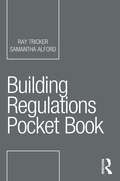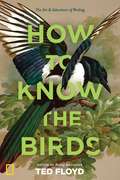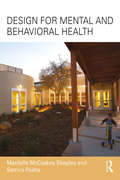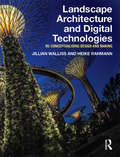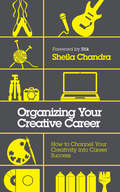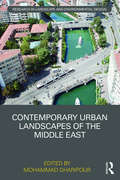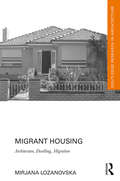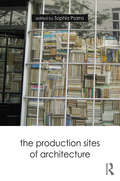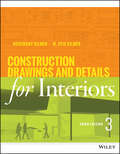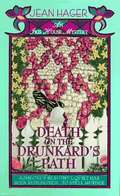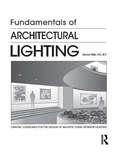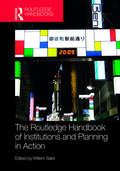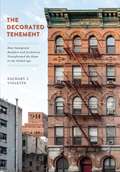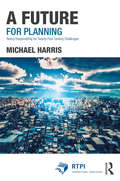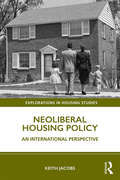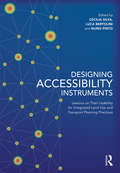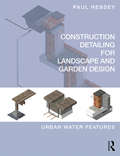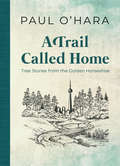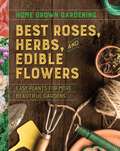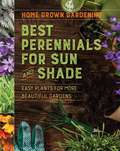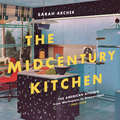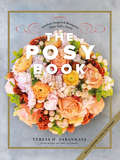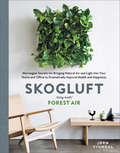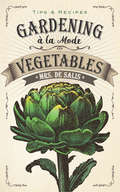- Table View
- List View
Building Regulations Pocket Book (Routledge Pocket Books)
by Ray Tricker Samantha AlfordThis handy guide provides you with all the information you need to comply with the UK Building Regulations and Approved Documents. On site, in the van, in the office, wherever you are, this is the book you’ll refer to time and time again to double check the regulations on your current job. The Building Regulations Pocket Book is the must have reliable and portable guide to compliance with the Building Regulations. Part 1 provides an overview of the Building Act Part 2 offers a handy guide to the dos and don’ts of gaining the Local Council’s approval for Planning Permission and Building Regulations Approval Part 3 presents an overview of the requirements of the Approved Documents associated with the Building Regulations Part 4 is an easy to read explanation of the essential requirements of the Building Regulations that any architect, builder or DIYer needs to know to keep their work safe and compliant on both domestic or non-domestic jobs This book is essential reading for all building contractors and sub-contractors, site engineers, building engineers, building control officers, building surveyors, architects, construction site managers and DIYers. Homeowners will also find it useful to understand what they are responsible for when they have work done on their home (ignorance of the regulations is no defence when it comes to compliance!).
How to Know the Birds: The Art and Adventure of Birding
by Ted FloydBecome a better birder with brief portraits of 200 top North American birds. This friendly, relatable book is a celebration of the art, science, and delights of bird-watching.How to Know the Birds introduces a new, holistic approach to bird-watching, by noting how behaviors, settings, and seasonal cycles connect with shape, song, color, gender, age distinctions, and other features traditionally used to identify species. With short essays on 200 observable species, expert author Ted Floyd guides us through a year of becoming a better birder, each species representing another useful lesson: from explaining scientific nomenclature to noting how plumage changes with age, from chronicling migration patterns to noting hatchling habits. Dozens of endearing pencil sketches accompany Floyd's charming prose, making this book a unique blend of narrative and field guide. A pleasure for birders of all ages, this witty book promises solid lessons for the beginner and smiles of recognition for the seasoned nature lover.
Design for Mental and Behavioral Health
by Mardelle McCuskey Shepley Samira PashaStudies confirm that the physical environment influences health outcomes, emotional state, preference, satisfaction and orientation, but very little research has focused on mental and behavioural health settings. This book summarizes design principles and design research for individuals who are intending to design new mental and behavioural health facilities and those wishing to evaluate the quality of their existing facilities. The authors discuss mental and behavioural health systems, design guidelines, design research and existing standards, and provide examples of best practice. As behavioural and mental health populations vary in their needs, the primary focus is limited to environments that support acute care, outpatient and emergency care, residential care, veterans, pediatric patients, and the treatment of chemical dependency.
Landscape Architecture and Digital Technologies: Re-conceptualising design and making
by Jillian Walliss Heike RahmannLandscape Architecture and Digital Technologies explores how digital technologies are reshaping design and making in landscape architecture. While the potentials of digital technologies are well documented within landscape planning and visualisation, their application within design practice is far less understood. This book highlights the role of the digital model in encouraging a new design logic that moves from the privileging of the visual to a focus on processes of formation, bridging the interface of the conceptual and material, the virtual and the physical. Drawing on interviews and projects from a range of international designers -including , Snøhetta, Arup, Gustafson Porter, ASPECT Studios, Grant Associates, Catherine Mosbach, Philippe Rahm, PARKKIM, LAAC and PEG office of landscape + architecture among others, the authors explore the influence of parametric modelling, scripting, real-time data, simulation, prototyping, fabrication, and Building Information Modelling on the design and construction of contemporary landscapes. This engagement with practice is expanded through critical reflection from academics involved in landscape architecture programs around the world that are reshaping their research and pedagogy to reflect an expanded digital realm. Crossing critical theory, technology and contemporary design, the book constructs a picture of an emerging twenty-first century practice of landscape architecture practice premised on complexity and performance. It also highlights the disciplinary demands and challenges in engaging with a rapidly evolving digital context within practice and education. The book is of immense value to professionals and researchers, and is a key publication for digital landscape courses at all levels.
Organizing for Creative People: How to Channel the Chaos of Creativity into Career Success
by Shelia Chandra‘Sheila gave me the tools to hunt success, and the infrastructure to handle it when it came.’ Stik, world renowned street artist and author Most of the conventional ‘productivity’ advice you’ll find in the ‘soft business’ section simply does not work for creative people. Surprisingly, to date there has not been a single book that addresses the unique organizational challenges that artists face. This book sets out to change that, it addresses the myth that truly creative people are messy and that they need mess in order to create. Sheila Chandra applies her professional insights as a ‘creative’ and organizing expert to the lives of other busy creative people in all disciplines – showing them how good organization can liberate their creative ‘magic’. She begins with artists’ physical spaces, including arranging their workspaces and offices so that they remain tidy effortlessly. Her career ‘headspace’ chapters cover: • creative well-being, including artist support systems • career well-being, including networking and collaborations • self-promotion and how to avoid working for free • making social media pay • personal branding, career planning and goals • how to manage copyright issues and legal paperwork • legacy management And all from an artist’s point of view. These fool-proof, tried and tested systems are mixed with creativity tips and artist well-being advice that only one artist knows to give another. Written with real affection for the reader, Sheila Chandra takes the creative person by the hand and puts them on the path to success.
Contemporary Urban Landscapes of the Middle East (Routledge Research in Landscape and Environmental Design)
by Mohammad GharipourThe Middle East is well-known for its historic gardens that have developed over more than two millenniums. The role of urban landscape projects in Middle Eastern cities has grown in prominence, with a gradual shift in emphasis from gardens for the private sphere to an increasingly public function. The contemporary landscape projects, either designed as public plazas or public parks, have played a significant role in transferring the modern Middle Eastern cities to a new era and also in transforming to a newly shaped social culture in which the public has a voice. This book considers what ties these projects to their historical context, and what regional and local elements and concepts have been used in their design.
Migrant Housing: Architecture, Dwelling, Migration (Routledge Research in Architecture)
by Mirjana LozanovskaMigrant Housing, the latest book by author Mirjana Lozanovska, examines the house as the architectural construct in the processes of migration. Housing is pivotal to any migration story, with studies showing that migrant participation in the adaptation or building of houses provides symbolic materiality of belonging and the platform for agency and productivity in the broader context of the immigrant city. Migration also disrupts the cohesion of everyday dwelling and homeland integral to housing, and the book examines this displacement of dwelling and its effect on migrant housing. This timely volume investigates the poetic and political resonance between migration and architecture, challenging the idea of the ‘house’ as a singular theoretical construct. Divided into three parts, Histories and theories of post-war migrant housing, House/home and Mapping migrant spaces of home, it draws on data studies from Australia and Macedonia, with literature from Canada, Sweden and Germany, to uncover the effects of unprivileged post-war migration in the late twentieth century on the house as architectural and normative model, and from this perspective negotiates the disciplinary boundaries of architecture.
The Production Sites of Architecture
by Sophia PsarraThe Production Sites of Architecture examines the intimate link between material sites and meaning. It explores questions such as: how do spatial configurations produce meaning? What are alternative modes of knowledge production? How do these change our understanding of architectural knowledge? Featuring essays from an international range of scholars, the book accepts that everything about the production of architecture has social significance. It focuses on two areas: firstly, relationships of spatial configuration, form, order and classification; secondly, the interaction of architecture and these notions with other areas of knowledge, such as literature, inscriptions, interpretations, and theories of classification, ordering and invention. Moving beyond perspectives which divide architecture into either an aesthetic or practical art, the authors show how buildings are informed by intersections between site and content, space and idea, thought and materiality, architecture and imagination. Presenting illustrated case studies of works by architects and artists including Amale Andraos, Dan Wood, OMA, Koen Deprez and John Soane, The Production Sites of Architecture makes a major contribution to our understanding of architectural theory.
Construction Drawings and Details for Interiors: Basic Skills
by W. Otie Kilmer Rosemary KilmerConstruction Drawings and Details for Interiors serves as the essential reference for designers preparing interior construction documents, explaining how to do a new construction, remodeling, or installation project. In a highly visual format, the book covers drafting fundamentals and conventions; drawing types, plans, and schedules; and computer-aided design (CAD). With expanded coverage of the preparation and communication of construction documents in digital formats, drawing interior perspectives, and more, the text also serves as an invaluable study reference for the contract documents section of the NCIDQ exam. A new companion Web Site supplies template grids for schedules and contract documents for practice exercises.?
Death On The Drunkard's Path (Iris House Mystery Ser. #No. 3)
by Jean Hager[From the back cover:] A Cruel cut in the quilt The annual Victoria Springs Quilt Show and Sale attracts quilters and quilt-lovers from far and wide and Tess Darcy and her guests at Iris House are caught up in a flurry of preshow activity. The stakes are high, with winning quilts commanding top dollar and deadly competition turning quiet quilters into vicious backstabbers. But when suspicious “accidents” occur in the exhibition hall Tess wonders just how far someone is willing to go to win a blue ribbon...a question that is answered with a gruesome discovery beneath the deep crimson artistry of a lovely Drunkard’s Path quilt: someone has used a quilters’ tool to create a bloody murder! Look for more intriguing Iris House Mysteries by JEAN HAGER in the Bookshare library including #1. Blooming Murder, #2. Dead and Buried, # 4. The Last Noel, # 5. Sew Deadly, # 6. Weigh Dead, and # 7. Bride and Doom
Fundamentals of Architectural Lighting
by Samuel MillsThe theme of this book is that light is an inseparable part of architectural design, and is intended to provide students of architecture and interior design with a graphic guideline to the fundamental role lighting plays in this process. While simple light sources may be enough to satisfy practical needs, the design process must expand beyond basic illumination. The challenge for architects and designers is the creation of luminous environments offering visual interest and a sense of well-being, while also meeting basic seeing needs. Technological advances provide opportunities for the lighting designer's creative introduction of light, and the visual and psychological perceptions of the illuminated architectural environment. Fundamentals of Architectural Lighting offers a complete comprehensive guide to the basics of lighting design, equipping students and practitioners with the tools and ideas they need to master a variety of lighting techniques. The book is extensively illustrated with over 250 illustrations to demonstrate basic principles and procedures. It is an excellent resource for anyone interested in the fundamentals of integrated lighting for architectural interior spaces.
The Routledge Handbook of Institutions and Planning in Action
by Willem SaletThe Routledge Handbook of Institutions and Planning in Action contains a selection of 25 chapters prepared by specialized international scholars of urban planning and urban studies focusing on the question of how institutional innovation occurs in practices of action. The contributors share expertise on institutional innovation and philosophical pragmatism. They discuss the different facets of these two conceptual frameworks and explore the alternative combinations through which they can be approached. The relevance of these conceptual lines of thought will be exemplified in exploring the contemporary practices of sustainable (climate-proof) urban transition. The aim of the handbook is to give a boost to the turn of institutional analysis in the context of action in changing cities. Both philosophical pragmatism and institutional innovation rest on wide international uses in social sciences and planning studies, and may be considered as complementary for many reasons. However, the combination of these different approaches is all but evident and creates a number of dilemmas. After an encompassing introductory section entitled Institutions in Action, the handbook is further divided into the following sections: Institutional innovation Pragmatism: The Dimension of Action On Justification Cultural and Political Institutions in Action Institutions and Urban Transition
Adaptive Reuse of the Built Heritage: Concepts and Cases of an Emerging Discipline
by Bie Plevoets Koenraad Van CleempoelAdaptive reuse – the process of repairing and restoring existing buildings for new or continued use – is becoming an essential part of architectural practice. As mounting demographic, economic, and ecological challenges limit opportunities for new construction, architects increasingly focus on transforming and adapting existing buildings. This book introduces adaptive reuse as a new discipline. It provides students and professionals with the understanding and the tools they need to develop innovative and creative approaches, helping them to rethink and redesign existing buildings – a skill which is becoming more and more important. Part I outlines the history of adaptive reuse and explains the concepts and methods that lie behind new design processes and contemporary practice. Part II consists of a wide range of case studies, representing different time periods and strategies for intervention. Iconic adaptive reuse projects such as the Caixa Forum in Madrid and the Rijksmuseum in Amsterdam are discussed alongside less famous and spontaneous transformations such as the Kunsthaus Tacheles in Berlin, in addition to projects from Italy, Spain, Croatia, Belgium, Poland, and the USA. Featuring over 100 high-quality color illustrations, Adaptive Reuse of the Built Heritage is essential reading for students and professionals in architecture, interior design, heritage conservation, and urban planning.
The Decorated Tenement: How Immigrant Builders and Architects Transformed the Slum in the Gilded Age
by Zachary J. VioletteA reexamination of working-class architecture in late nineteenth-century urban AmericaAs the multifamily building type that often symbolized urban squalor, tenements are familiar but poorly understood, frequently recognized only in terms of the housing reform movement embraced by the American-born elite in the late nineteenth century. This book reexamines urban America’s tenement buildings of this period, centering on the immigrant neighborhoods of New York and Boston. Zachary J. Violette focuses on what he calls the “decorated tenement,” a wave of new buildings constructed by immigrant builders and architects who remade the slum landscapes of the Lower East Side of Manhattan and the North and West Ends of Boston in the late nineteenth century. These buildings’ highly ornamental facades became the target of predominantly upper-class and Anglo-Saxon housing reformers, who viewed the facades as garish wrappings that often hid what they assumed were exploitative and brutal living conditions. Drawing on research and fieldwork of more than three thousand extant tenement buildings, Violette uses ornament as an entry point to reconsider the role of tenement architects and builders (many of whom had deep roots in immigrant communities) in improving housing for the working poor.Utilizing specially commissioned contem-porary photography, and many never-before-published historical images, The Decorated Tenement complicates monolithic notions of architectural taste and housing standards while broadening our understanding of the diversity of cultural and economic positions of those responsible for shaping American architecture and urban landscapes.
A Future for Planning: Taking Responsibility for Twenty-First Century Challenges (RTPI Library Series)
by Michael HarrisAs well as being spatial, planning is necessarily also about the future – and yet time has been relatively neglected in the academic, practice and policy literature on planning. Time, in particular the need for longer-term thinking, is critical to responding effectively to a range of pressing societal challenges from climate change to an ageing population, poor urban health to sustainable economic development. This makes the relative neglect of time not only a matter of theoretical importance but also increasing practical and political significance. A Future for Planning is an accessible, wide-ranging book that considers how planning practice and policy have been constrained by short-termism, as well as by a familiar lack of spatial thinking in policy, in response to major social, economic and environmental challenges. It suggests that failures in planning often represent failures to anticipate and shape the future which go well beyond planning systems and practices; rather our failure to plan for the longer-term relates to wider issues in policy-making and governance. This book traces the rise and fall of long-term planning over the past 80 years or so, but also sets out how planning can take responsibility for twenty-first century challenges. It provides examples of successes and failures of longer-term planning from around the world. In short, the book argues that we need to put time back into planning, and develop forms of planning which serve to promote the sustainability and wellbeing of future generations.
Neoliberal Housing Policy: An International Perspective (Explorations in Housing Studies)
by Keith JacobsNeoliberal Housing Policy considers some of the most significant housing issues facing the West today, including the increasing commodification of housing; the political economy surrounding homeownership; the role of public housing; the problem of homelessness; the ways that housing accentuates social and economic inequality; and how suburban housing has transformed city life. The empirical focus of the book draws mainly from the US, UK and Australia, with examples to illustrate some of the most important features and trajectories of late capitalism, including the commodification of welfare provision and financialisation, while the examples from other nations serve to highlight the influence of housing policy on more regional- and place-specific processes. The book shows that developments in housing provision are being shaped by global financial markets and the circuits of capital that transcend the borders of nation states. Whilst considerable differences within nation states exist, many government interventions to improve housing often fall short. Adopting a structuralist approach, the book provides a critical account of the way housing policy accentuates social and economic inequalities and identifies some of the significant convergences in policy across nations states, ultimately offering an explanation as to why so many ‘inequalities’ endure. It will be useful for anyone in professional housing management/social housing programmes as well as planning, sociology (social policy), human geography, urban studies and housing studies programmes.
Designing Accessibility Instruments: Lessons on Their Usability for Integrated Land Use and Transport Planning Practices
by Cecilia Silva Nuno Pinto Luca BertoliniThe integration of land use and transport planning is key to making cities sustainable and liveable. Accessibility can provide an effective framework for this integration. However, today there is a significant gap between the advances in scientific knowledge on accessibility and its effective application in planning practice. In order to close this gap, Designing Accessibility Instruments introduces a novel methodology for the joint assessment and development of accessibility instruments by researchers and practitioners. The book: provides a theoretical and professional analysis of the main concepts behind the definition, use and measurement of accessibility; undertakes a comprehensive inventory and critical analysis of accessibility instruments, focusing on the bottlenecks in their transposition to planning practice; introduces and applies a novel methodology for the assessment and improvement of the practical use and usefulness of accessibility instruments; presents six in-depth illustrative case study applications of the methodology, representing a range of cities with different geographical and institutional settings, and different levels of urban and transport planning integration. The book is supported by a companion website – www.accessibilityplanning.eu – which extrapolates its content to a broader scope and keeps it updated and valid with new iterations of the methodology and further advances on the initial and new case studies.
Construction Detailing for Landscape and Garden Design: Urban Water Features
by Paul HenseyFollowing on from the author’s previous book, Construction Detailing for Landscape and Garden Design: Surfaces, Steps and Margins, this book, Construction Detailing for Landscape and Garden Design: Urban Water Features, provides clear instruction for the construction of small to medium scale water features. With over 130 black and white CAD designs, Hensey provides guidance on a range of different water features such as drainage, water bowls and containers, walls and edges, structures and crossings, and rills, channels and cascades. This book offers technical references and a general knowledge of the basic principles, materials and techniques needed when engineering with water. This practical guide would be beneficial for garden designers and landscape architects seeking accessible and relatable materials for designing water features.
A Trail Called Home: Tree Stories from the Golden Horseshoe
by Paul O'HaraAn exploration of trees in the Golden Horseshoe and the stories they tell. Trees define so much of Canadian life, but many people, particularly in the Golden Horseshoe area of Ontario, don’t know that much about them. Granted, it is harder here: there are more trees that are native to this area than anywhere else in Canada. The great storytellers of the landscape, trees are looking glasses into the past. They speak of biology, ecology, and geology, as well as natural and human history. Through a greater understanding of trees, we can become more rooted to the land beneath our feet, and our place in it.
Best Roses, Herbs, and Edible Flowers (Home Grown Gardening)
by Houghton Mifflin HarcourtA quick-reference guide to roses, herbs, and edible flowers for gardeners with little experience and time.Roses represent love and beauty. Their colors and fragrance create the standard by which many other flowers are measured. Cultivated around the world for perfume, roses have a sweet and unforgettable scent. However, many would-be rose gardeners believe that roses require constant care and lavish doses of sprays and chemicals. Roses do require attention, but their glorious flowers make all your efforts worthwhile, and the roses in this book were chosen because they are tried-and-true, proven performers. Of the many types of plants that grow in our gardens, herbs and edible flowers hold a very special place. People use herbs and edible flowers to heal their bodies, calm their minds, add fragrance to their homes, and flavor and preserve their foods—herbs improve the quality of our lives. This colorful, photo-filled book takes the guesswork out of gardening with the easiest-to-grow and best-performing roses, herbs, and edible flowers. No trial and error—get it right the first time!
Best Perennials for Sun and Shade (Home Grown Gardening)
by Houghton Mifflin HarcourtA quick-reference guide to perennials for gardeners with little experience and time.
The Midcentury Kitchen: America's Favorite Room, From Workspace To Dreamscape, 1940s-1970s
by Sarah ArcherAn illustrated pop history from aqua to avocado, Westinghouse to Wonder Bread Nearly everyone alive today has experienced cozy, welcoming kitchens packed with conveniences that we now take for granted. Sarah Archer, in this delightful romp through a simpler time, shows us how the prosperity of the 1950s kicked off the technological and design ideals of today’s kitchen. In fact, while contemporary appliances might look a little different and work a little better than those of the 1950s, the midcentury kitchen has yet to be improved upon. During the optimistic consumerism of midcentury America when families were ready to put their newfound prosperity on display, companies from General Electric to Pyrex to Betty Crocker were there to usher them into a new era. Counter heights were standardized, appliances were designed in fashionable colors, and convenience foods took over families’ plates. With archival photographs, advertisements, magazine pages, and movie stills, The Midcentury Kitchen captures the spirit of an era—and a room—where anything seemed possible.
The Posy Book: Garden-inspired Bouquets That Tell A Story
by Teresa H. Sabankaya“Like a favorite recipe, a posy is meant to be savored and shared. Try it yourself, and … welcome a bit of floral enchantment into your life.” —Amy Stewart, author of The Drunken Botanist Inspired by the Victorian-era language of flowers, a posy is a small, round bouquet of flowers, herbs, and plants meant to convey a message, such as dahlias for gratitude, sunflowers for adoration, or thyme for bravery. These floral poems have become Teresa Sabankaya’s signature. Brides want them for their weddings, but a posy is a lovely gift any time of year, and one that readers can easily put together from their garden or with blooms from their local florist. In The Posy Book, Sabankaya shares step-by-step instructions, floral recipes for more than 20 posies, and ideas for seasonal variations. A modern floral dictionary, with 12 original paintings by celebrated illustrator Maryjo Koch, will help readers craft their own posies filled with personal meaning.
Skogluft: Norwegian Secrets for Bringing Natural Air and Light into Your Home and Office to Dramatically Improve Health and Happiness
by Jorn ViumdalThe simple, easy to understand Norwegian method for bringing nature into your home and office to help your health and mood.For millions of years, humans developed in natural environments, in close contact with sunlight, vegetation, water, and air. While we are biologically and physiologically similar to our Stone Age ancestors, most of us spend nearly all of our lives indoors, removed from the natural world. Studies have shown that spending time outdoors in or near nature delivers emotional, psychological, and physical benefits. Jorn Viumdal is on a mission to bring a natural living environment back to the home and workplace. In Skogluft—which translates to” forest air”—he draws on data from the University of Environmental Research and Bioscience in Norway and three decades of NASA research to reveal how a carefully chosen selection of plants grown and placed in a specific way indoors can dramatically improve health, reduce fatigue, strengthen the immune system, and enhance concentration, communication, and vitality. Having these plants around us can help improve how our bodies feel and prevent disease, make us happier and calmer, and increase our efficiency and productivity.Skogluft teaches you how to transform any wall in a home or office into a living wall to help remove toxins from the air, reduce stress, and strengthen the immune system. Viumdal explains which plants improve overall health and release different gases for optimal well-being. All the vegetation can be found in local nurseries or stores and online. Following Viumdal’s method, you will feel better, have more energy, and lift your spirits as you add natural beauty into your world.
Gardening à la Mode: Vegetables
by Harriet Anne De SalisWhat's the best way to protect vegetables from frost? How do you dry herbs and banish slugs? There's much to learn about making the most of your backyard vegetable garden, and this handy little guide is brimming with advice for novice gardeners. Written by a popular magazine columnist of the nineteenth century, these timeless suggestions offer straightforward guidance for every step of the way, from planting, watering, and fertilizing to cooking and preserving your homegrown produce.Author Harriet Anne de Salis was an expert at counseling Victorian housewives on the domestic arts, writing commonsense manuals for everything from cooking on a budget to raising poultry and training dogs. This companion volume to Gardening à la Mode: Fruits features alphabetized entries and an index for easy reference. Even seasoned gardeners and cooks are likely to find it a source of useful hints and enduring charm.
